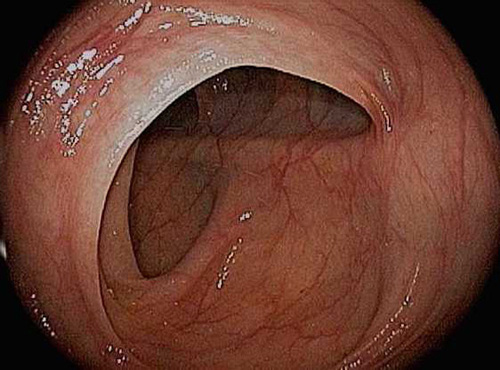
, in which many surgeons favor routine mobilization of the flexure at an early stage in the operation, particularly for low rectal cancers. This approach is similar to the study of Marsden et al. A median to lateral approach for the complete mobilization of the splenic flexure was commonly described in various studies. A variety of approaches for SFM have been used by surgeons to simplify the technique. This can be technically accomplished either through a lateral-to-medial or a medial-to-lateral approach. In partial SFM, it is limited only to the division of splenocolic and phrenicocolic ligaments while a complete SFM includes not only the division of splenocolic and phrenicocolic ligaments (partial mobilization) but the division of gastro-colic and pancreaticomesocolic attachments.

It is crucial to differentiate a partial splenic flexure from the complete SFM. However, it is relevant to know the procedural aspect of SFM consisting of the division of the splenocolic, phrenicocolic, gastro colic and pancreaticomesocolic ligaments. The definition of SFM is different among several studies with some describing the technique as either complete or partial mobilization.

The use of SFM for CRC surgery remains a contentious issue, but safe dissection of the splenic flexure to fully mobilize the descending colon is mandatory not only for oncologic resection but also for safe anastomosis. SFM is one of the essential, challenging and technically demanding step during laparoscopic rectal cancer surgery. This paper aims to discuss the importance of splenic flexure mobilization (SFM) and its technical details during laparoscopic rectal surgery. The emergence of laparoscopic colorectal surgery has not been fully embraced by most surgeons mostly because of the increased technical laparoscopic skill requirements. There were initial concerns about the potential risk of tumor cell dissemination during laparoscopy but this has not been validated. The standard surgical treatment is a complete oncologic resection with a primary anastomosis. Left-sided CRC comprises two thirds of all colorectal malignancies. In China Medical University Hospital (CMUH), a tertiary medical center in Taichung City, a team of colorectal surgeons performs a high volume of cases for laparoscopic rectal surgeries. Laparoscopic approach for colon and rectal cancer was associated with less morbidity, enhanced recovery, and at least equivalent oncological outcomes. Laparoscopic surgery has gained increasing interest for the treatment of CRC. The evolution of laparoscopic-assisted compared to open approach colorectal surgery for diverticular disease and cancer was first introduced in the early 1990s and was aimed to offer the benefit of less trauma, without compromising functional and oncological outcomes. Based on the National Cancer Registry of Taiwan, CRC is the second most common invasive neoplastic disease with a total of 15,764 cases in 2014 and a crude incidence rate of 67.27%.

The cancer burden will be increasing by 60% to more than 2.2 million new cases and resulting in 1.1 million deaths by 2030.

It currently ranks third based on the GLOBOCAN (Global Cancer Incidence, Mortality and Prevalence) index and is also the fourth leading cause of cancer-related deaths. Nursing Times 115: 10, 50-53.Īuthors: Yamni Nigam is professor in biomedical science John Knight is associate professor in biomedical science Nikki Williams is associate professor in respiratory physiology all at the College of Human Health and Sciences, Swansea University.One of the most commonly diagnosed malignancies in the world is colorectal cancer (CRC).
#Intestinal flexture series
This article, the fifth in a six-part series exploring the gastrointestinal tract, describes the anatomy and functions of the large intestine.Ĭitation: Nigam Y et al (2019) Gastrointestinal tract 5: the anatomy and functions of the large intestine. Intestinal content is pushed back and forth by haustral contractions and antiperistaltic contractions, until faeces are finally pushed towards the anal canal by mass movements. The large intestine is also where faeces are formed from the remains of food and fluid combined with by-products of the body. In the large intestine â the final section of the gastrointestinal tract â absorption of water and electrolytes takes place and colonic bacteria complete the process of chemical digestion. This article – the fifth in a six-part series describes the physiology and functions of the large intestine, the last portion of the gastrointestinal tract, as well as common conditions of both the small and large intestine


 0 kommentar(er)
0 kommentar(er)
